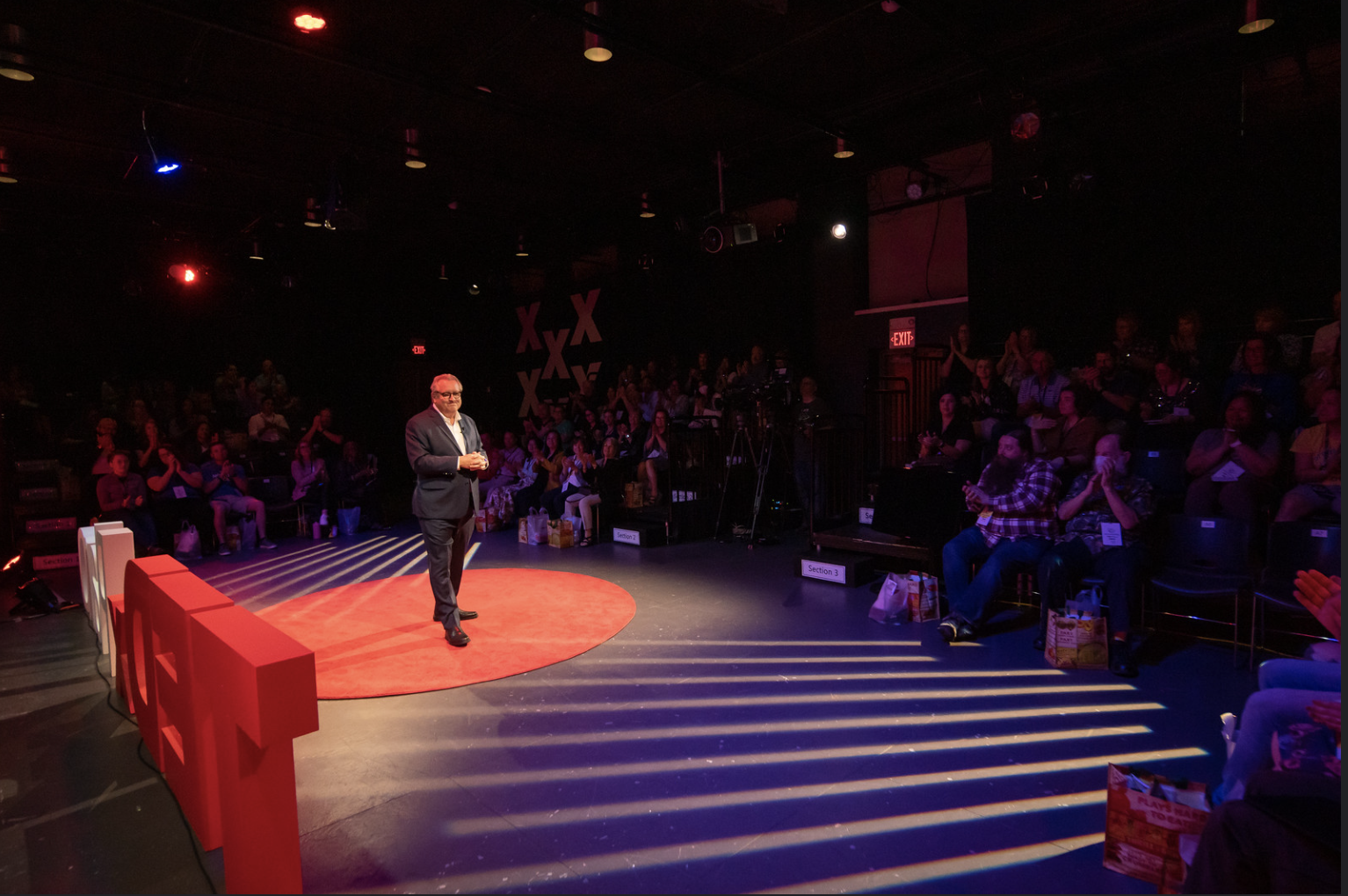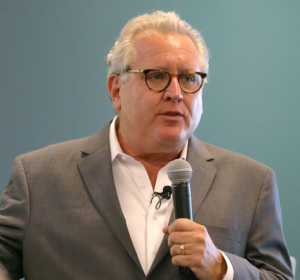
My friend Valentina Escobar-Gonzalez dreams of giving a TED talk of her own some day. She asked me how I prepared to give my speech, and I told her I would write a post about it for her because indeed, I am a full-service blogger! Today, How to Create Your TED Talk!
I gave my TED talk in the summer of 2022, but the preparation really started years in advance.
Getting into TED
I’m a busy person, but things always slow down during the holiday season, and I use this time to reflect, learn, and consider changes I need to make to my business in the coming year.
One of my holiday traditions is to spend a day binging the best TED talks. I did this for years before I was ever invited to give a talk. I take notes on the styles of the best speakers in the world. How do they construct their speeches? How do they use surprise? Humor? Props? Video and other media? Why did they get selected for TED?
I didn’t do this every year to become a TED speaker; I did it to be a better speaker, period.
The invite
Many people dream of being a TED speaker. I was not one of them. I figured if it happened, it happened. It was never a goal or priority. I guess I’m just content with where I am right now.
But an invitation came out of the blue. I became friends with Shannah Haley, who attended each of my Uprising retreats. At this event, 30 people gather for two and a half days to discuss big ideas about marketing. We also become really great friends. Over the course of our time together she became familiar with my ideas and speaking style and invited me to the TEDx event she organizes in Texas.
Shannah is the consummate professional. She cares so much about this event, and so it was an incredible honor for her to ask me. But she also knew I was a professional, too, and she assigned me to be the closing speaker at her event because of the trust she had in me.
More likely, you will have to apply to be a speaker, so I was fortunate in this instance.
Create your TED talk
The purpose of TED is to spread bold new ideas. So that is a little nerve-wracking, right? How did I come up with an idea?
A good way to start thinking about this is to establish a spiky point of view.
1. A spiky point of view can be debated.
2. A spiky point of view isn’t controversial for the sake of it.
3. A spiky point of view teaches your audience something relevant they don’t already know.
4. A spiky point of view is rooted in evidence, but it doesn’t have to be a proven fact or universal truth.
5. A spiky point of view requires conviction.
You have to be brave enough to advocate for what you believe in. It’s not a passive regurgitation of information. There’s a stance of advocacy and a bias toward action. You’re trying to convince someone of this idea because you genuinely believe they’ll be better for it.
Examples of spiky points of view from my blog:
- Why Twitter is stuck and will remain that way
- Buying on beliefs? I don’t believe it.
- The business case for personal branding in one photograph
In other words, this is the kind of bold idea TED is looking for. Spiky and bold.
It’s even better if you can apply your idea to some current issues like climate change, inclusiveness, and social justice, for example.
A process you might follow to create your TED talk idea:
- Start by thinking about your passions and interests. Identify a topic that you feel strongly about, that you know a lot about, and that you feel passionate and excited to talk about.
- Narrow it down to the ones that you’re most interested in exploring.
- Research the topic to make sure it’s a good fit for a TED talk. Look at other TED talks to get an idea of the kinds of topics that are typically discussed.
- Choose a topic that’s timely and relevant. Consider the current events, trends, and conversations that people are having.
- Make sure the topic is specific enough to focus on and explore in depth. Avoid topics that are too broad or that don’t offer much to explore.
- Refine your topic by focusing on a specific angle or perspective. Consider how you can make the topic unique and interesting to your audience.
- Test your topic out on a few people. Ask for their feedback and see if they’re interested in hearing more about it.
My idea was to apply concepts from my book Cumulative Advantage (full of spiky ideas) to the dramatic changes in our lives forged by the pandemic. How can you stay relevant in this period of overwhelming change?
Writing the speech
The specific challenge of a TED talk is to share a bold idea in a creative, memorable, and effective manner … in less than 18 minutes!
In some ways, this is much more difficult than a 45-minute keynote speech. My normal speeches are entertaining and tailored to a specific audience. A TED talk creates a permanent legacy. It is the speaking equivalent of writing a book. So every word must be precise.
For the first time in my life, I wrote out a speech word-for-word, obsessing over every phrase.
My outline went like this:
- Establish the problem through data and stories
- Discuss why this problem is relevant to the audience
- Briefly discuss the problem of relevance from a historical perspective. Relevance is a modern problem.
- Reveal a solution.
- Explain how to apply this solution.
- End with a message of encouragement and hope.
Memorizing and practicing a TED talk

I highly recommend using slides when you create your TED talk for two reasons. First, it can punctuate your speech with meaningful graphs, illustrations, and images. Second, these slides serve as prompts to keep your speech on track.
I decided NOT to use slides, something I’ve never done before. Why did I put myself through this stress? I thought it would be a fun challenge to be personal, raw, and so meaningful that I did not need any slides. This was going to be recorded and displayed on the most famous storytelling site in the world. I wanted to push myself to be my best.
Even though I knew my material very well, it was still exceedingly difficult to memorize an 18-minute narrative. I handled this by thinking of my talk as four sections. So really, I was memorizing four stories that I told in order!
I practiced and practiced because I was determined to get every word right. I even rehearsed one more time in the hallway of the lecture hall before I went onstage.
Giving your TED talk
I was the “clean-up” speaker, the last one on the program. This probably helped settle the nerves as I settled in to hear the other speakers. All of them were tremendous! Of course. This was TED.
No matter how much you practice by yourself, there is nothing that can prepare you for stepping into that spotlight and thunderous applause in your honor. That’s why the first 90 seconds are so important. If you can get through the first 90 seconds and the stunning reality of being alone and vulnerable, you’ll be OK.
Make sure you love the first 90 seconds of your talk and that you’re 100 percent confident in it! After that, it’s automatic!
Many TED events are full-day festivals of food and art, but the stars are really the speakers. I made new friends, and now have a permanent spot on the TED site … something to be proud of!
Fun fact, a few days before my talk I had a tooth break off. I had a temporary crown put on that did not fit precisely and it gave me a slight lisp when I spoke. You can detect it in the recording of the talk. I was struggling to speak in a manner that minimized the lisp!
The stress you do NOT see behind the scenes!
If you’d like to view my speech, you can see it here:
 Mark Schaefer is the executive director of Schaefer Marketing Solutions. He is the author of some of the world’s bestselling digital marketing books and is an acclaimed keynote speaker, college educator, and business consultant. The Marketing Companion podcast is among the top business podcasts in the world. Contact Mark to have him speak at your company event or conference soon.
Mark Schaefer is the executive director of Schaefer Marketing Solutions. He is the author of some of the world’s bestselling digital marketing books and is an acclaimed keynote speaker, college educator, and business consultant. The Marketing Companion podcast is among the top business podcasts in the world. Contact Mark to have him speak at your company event or conference soon.
Follow Mark on Twitter, LinkedIn, YouTube, and Instagram.


